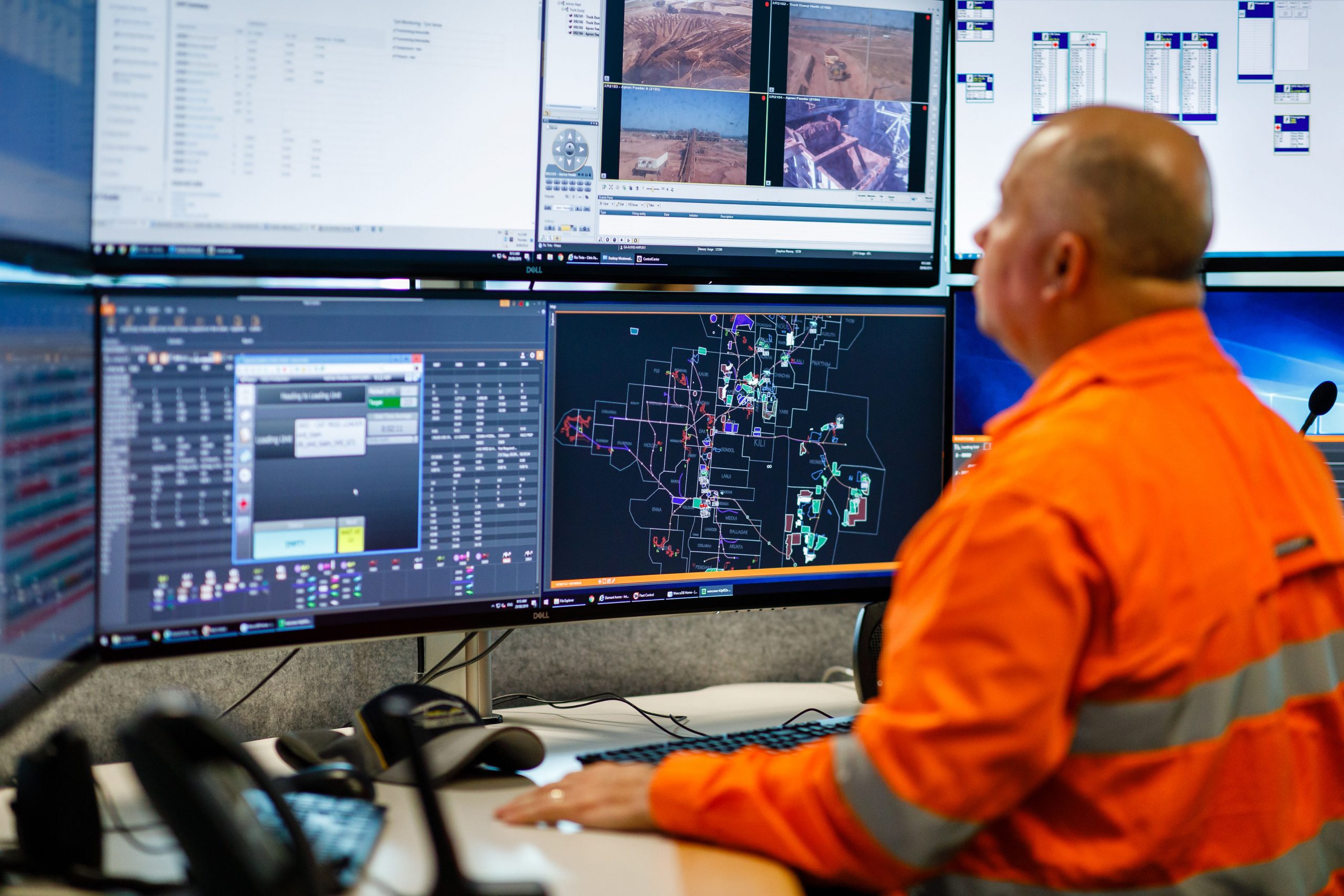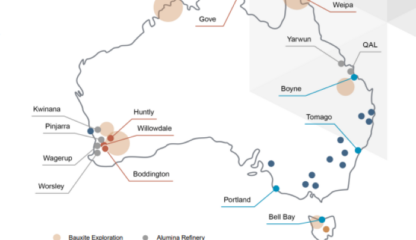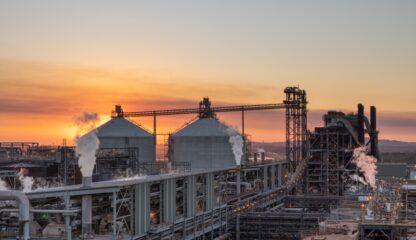
In August 2019, the switch was flicked on Rio Tinto’s Brisbane-based Bauxite Integrated Operations Centre (BIOC), transforming how the Aluminium group mines bauxite in the Pacific.
The BIOC runs across four shifts 24 hours a day, seven days a week, 365 days a year. Team members in the BIOC remotely manage dispatch, monitoring and control capabilities for both the Weipa (including Amrun, Andoom and East Weipa) and Gove bauxite mines (located more than 2,500 kilometres away) using Rio Tinto-first technology.
With the inclusion of both operations, the centre operates a fully integrated bauxite mine despatch, leading to safer operations in the pit, increased pit productivity and a new opportunity to share best practice across our two mines. The centre also includes utilities, stockyard, port scheduling and asset health for our Weipa Operations, with Gove’s asset health, dynamic scheduling, stockyards and ports functions joining the centre in 2020.
We announced the BIOC in February 2019, and since then, there has been intense and rigorous planning, commissioning and testing to bring the centre to life. Workshops were held with employees from Weipa, Gove and Brisbane to ensure its design was fit-for-purpose and the way it functions creates a step-change in productivity. Some of those employees have made the move to Brisbane with their families to become BIOC pioneers.
Kellie Parker RTA’s managing director Pacific Operations said the vision for the BIOC was to have our people and our business operate to their full potential, plan with the best information and exceed our customers’ needs.
“It is so important we delight our customers, and we know if we are better connected we can produce a better outcome, both for us as a business and for the market. The BIOC will help us do that by allowing us to capture data in a more sophisticated way and make smarter decisions to improve our market position,” Kellie said.
“When we make a decision on bauxite grades, historically we haven’t truly understood the roll-on impact to our refineries and smelters. With an end-to-end supply chain view, the BIOC allows us to ready the refineries and smelters to adapt their production processes without significant disruption.”
Key to the BIOC’s development was leveraging experience from Aluminium colleagues in the Atlantic region, and from Iron Ore in Western Australia. Through collaboration, the team has been able to apply the best of what works from these operations with the advantage of newer technology, some of which are Rio Tinto firsts.
Information Services and Technology (IS&T) business partner Ken Tan said an important part of the BIOC’s development was working in partnership with internal and external stakeholders to make sure the centre had the capabilities needed to move to the modern cloud platform, with rapid innovation at its core.
“By moving from physical storage infrastructure to cloud-based software, we have been able to collect near real-time information from each of our four mines in one virtual location. It is an approach that has never been done before for Rio Tinto globally,” Ken said.
“This enables us to gain a complete view across the entire supply chain and introduce new technologies such as artificial intelligence, machine learning and real-time reporting, which will help us to make quicker, more accurate and agile decisions based on a larger, more consistent set of data.
“The benefit of this technology is that, for the end user, nothing has changed. The speed and performance experienced in Weipa or Gove will be the same despite the person on the other end of the radio being more than 2,500 kilometres away—and as more users join the system, that won’t change.”
Not only is the team connected to their colleagues in Weipa and Gove, they have round-the-clock connectivity to the Commercial team in Singapore, thanks to video and voice capabilities via a dedicated screen located in the centre. The space also features 19 consoles (with a six-monitor set-up per station and parts made by Australian-manufactured aluminium), virtual desktops, two-way radios and interactive screens forming a “live-feed wall” to display Power BI real-time performance data and targets, RTVis mine mapping and weather alerts. All of this has been designed to enable real-time collaboration, communication and connectivity.
In parallel to the BIOC launch, a pilot project is underway at our New Zealand smelter to scope opportunities for smelting. The Aluminium Operations Centre (AOC) was launched in October 2019, and focuses on reduction cell monitoring to improve the interaction between process controllers and technical support across each shift. The team will use this pilot to better understand what opportunities exist to integrate the AOC into the BIOC in early 2020.
“Like any business, if we are to remain here for the long term, we must constantly evolve. Challenging how we have always done things makes us agile and smarter. Change is a constant for our business—we are continuously improving,” Kellie said.


